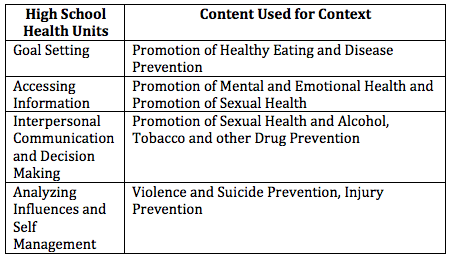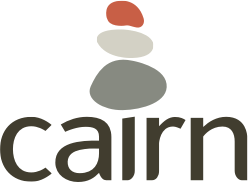data-animation-override>
“And from there, the students won’t smoke. They know it’s bad, so if the students have the content knowledge, they would always make healthy decisions, right?”
When I brought the Oregon K-12 Health Education Content Standards to the Oregon State Board of Education in December of 2004, I was deeply proud of a product that over 30 educators developed together with over 100 reviewers and an opportunity for the public to review.
As the state’s Health Education Curriculum Specialist, my role was to share these new standards with the Board. But, I didn’t want to lecture about the 8 standards and 9 content strands, or, share how the prescriptive grade level maps could help a teacher teach a comprehensive curriculum. I wanted to advocate for the field in a broader way. I assumed the State Board members had memories of health education from their school experience and I didn’t want that continued stereotype to stick. Trisha Ebbs, a rockstar high school health teacher in Salem Oregon came to that Board meeting with me. After I introduced our new standards, Trisha stood in front of the Board and handed 6 stapled pages, back to back of Chapter 11 from an old health textbook on smoking. She explained that this is what health education/tobacco prevention used to look like. Read the 6 pages and answer 5 questions in the back on how harmful tobacco is.
And from there, the students won’t smoke. They know it’s bad, so if the students have the content knowledge, they would always make healthy decisions, right?
Wrong. Tricia then handed out pamphlets that her students developed. The pamphlets were in many languages (to the choosing of the student) and had information on harmful affects of smoking, but also where to get help on quitting, who to talk to and how to refuse peer pressure to quit. These pamphlets were developed by her students and not only used to gauge their skills around advocacy, but the pamphlets were copied and placed in the nurses and counseling offices at her school. That helped the Board understand what health education in the 21st Century looks like.
Most subjects in school have shifted from content-based to skill-based. Social studies is now about interpreting and analyzing history, not just memorizing dates and places. Physical education has shifted from knowing the rules of sport to being a physically literate person; which is the motivation, confidence, physical competence, knowledge understanding to value and take responsibility for engagement in physical activities for life.
data-animation-override>
“For so long, health education was a joke class. It was about learning things you really already knew! So instead, we should be focusing on skill development.”
The goal of health education is healthy behavior outcomes. In order to have healthy behavior outcomes, our students need to be health literate. Healthy literacy is the degree to which a person has the capacity to obtain, process and understand basic health information and services needed to make appropriate health decisions. Oh wait! That’s why people still smoke. For so long, health education was a joke class. It was about learning things you really already knew! So instead, we should be focusing on skill development. How do we, first, prevent risky behaviors and secondly, intervene before unhealthy habits and routines form?
We’ve had the National Health Education Standards for years now. Seven of the eight are skill-based, but as I do training after training for health educators all over the US and I still see a focus on content by teachers in the classroom. Our textbooks and even research-based curricula are based on content. Our units and lessons are based on content. The field is changing, however. We are starting to shift our focus so that the textbooks, curricula, units, lessons, assessment are skill-focused.
My work in systems change assures me that it will take the field 12-15 years, possibly longer to embrace the shift. So, who’s along for the ride? The tipping point has begun! I challenge you, as educators to shift your thinking. Begin creating units based on the skills. Begin developing lessons that use content as context. Is this too abstract? Here’s an example:

data-animation-override>
“But, hear me out…. that’s NOT actually important anymore. Students don’t need to know everything.”
The opportunity here is that the focus is on the skill development/progression from introduction to reinforcement to mastery. And teachers can use the content to practice and demonstrate the skill. So, if in September, you want to focus on accessing information, look at your YRBS data, or other public health data on your community to drive what content would best fit for your students in your community around the skill of accessing valid and reliable health information. It could be accessing information around support when you or someone you know may be bullied. Or, accessing information on sexual health/contraception in your community. Or, accessing information on food labels. Or accessing places in school where you can wash your hands (more lower elementary level). You may use a few content areas to reinforce that skill so that students learn to transfer the skill from one aspect or area of their life to another. Then, the next unit would focus on another skill. Understanding that you’re not going to effectively get to all seven skill standards nor will you touch upon all content. But, hear me out…. that’s NOT actually important anymore. Students don’t need to know everything. They have the internet at their fingertips. And, if they know how to access valid and reliable information, let’s spend less time teaching them the facts and more time allowing time to demonstrate and practice the skills.
So, what are some resources to help? I’d suggest purchasing The Essentials of Health Education newly published and written by Sarah Benes and Holly Alperin. You can purchase a hard copy or e-book via Human Kinetics.
Jamie Hurley at RMC Health has developed Health Skills Models for the 7 national skill-standards that instruct the teacher on how to effectively teach the skill at an appropriate grade level (scaffolds by grade level spans). They also share what mastery looks like at each grade level span and share tools to teach the skill. These resources are about the best thing I’ve seen in health education for years and years. Use them!
Please feel free to contact me if you have further questions, need some support/PD in your district or state for state standards development, curriculum development and/or unit/lesson planning. I’m happy to continue to share resources as more become available!

Can’t wait for the text book and curriculum companies to catch up, and state boards of education to re-imagine a skills-based approach to achieving healthy behaviors and outcomes.
This line really stood out to me "let’s spend less time teaching them the facts and more time allowing time to demonstrate and practice the skills" Awesome reminder and sets the goal for every lesson!
I can’t seem to access the resources linked. Please help.
The only link that didn’t work was RMC’s and it’s been 2 years and they have finished all 7 models. They are all here, on that original RMC link: https://www.rmc.org/health-education-skills-models/
Also check out these blog posts:
Health Education Blog Post Series Part 1: Health Education Needs a New Identity
Supports to Teaching Skills-Based Health Education
Resources to Support K-12 School Health Education
Also cannot access the resources link.
The only link that didn’t work was RMC’s and it’s been 2 years and they have finished all 7 models. They are all here, on that original RMC link: https://www.rmc.org/health-education-skills-models/
Also check out these blogs:
Health Education Blog Post Series Part 1: Health Education Needs a New Identity
Supports to Teaching Skills-Based Health Education
Resources to Support K-12 School Health Education
4 Paradigm Shifts in Health Education &
4 More Paradigm Shifts in Health Education (continued)
I would love to have you come help us write curriculum. Where are you located? I’m the curriculum director for Hamden Public Schools, in Hamden CT.
Amanda Forcucci